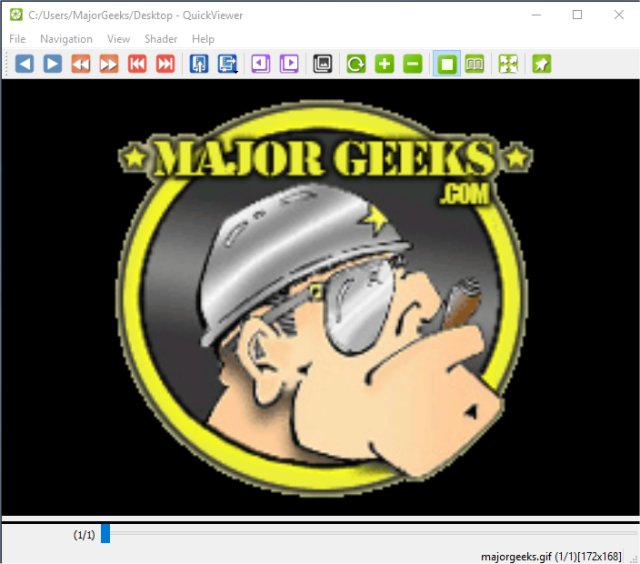QuickViewer 1.2.5 has been released, enhancing its capabilities as an OpenGL graphic image viewer that supports a wide array of image formats, including raw files. As an open-source and portable application, QuickViewer is designed for speed, preloading images and utilizing OpenGL for efficient display. Users can easily view image dimensions, navigate through images using a slider bar in the status bar, although it does not provide image size details.
The interface features five main tabs: File, Navigation, View, Shader, and Help. The File tab facilitates opening images, accessing history, and auto-loading the last viewed image. The Navigation tab enables users to move between images, bookmark favorites, and initiate slideshows of the loaded images. The View tab offers customization options for menus, full-screen viewing, and image adjustments such as scaling, rotation, and fitting. The Shader tab presents various resampling methods, including Bilinear, Bicubic, Lanczos, and Nearest Neighbor, which enhance the image viewing experience.
QuickViewer stands out in a market where many image viewers become bloated with unnecessary processing tools. While it includes some additional features, its primary strength lies in its speed, simplicity, and effectiveness as a straightforward image browsing solution.
Extension:
In addition to its current features, future updates to QuickViewer could focus on improving user experience by introducing a more intuitive interface or enhanced image management capabilities. For instance, adding tagging or categorization options for images could help users organize their collections more effectively. Furthermore, incorporating cloud integration could enable users to access their images from multiple devices seamlessly. Advanced features such as AI-driven image enhancement or automatic color correction could also be explored to attract more professional users. Overall, QuickViewer's commitment to remaining a fast and efficient tool while gradually expanding its functionality could solidify its position in the competitive landscape of image viewers
The interface features five main tabs: File, Navigation, View, Shader, and Help. The File tab facilitates opening images, accessing history, and auto-loading the last viewed image. The Navigation tab enables users to move between images, bookmark favorites, and initiate slideshows of the loaded images. The View tab offers customization options for menus, full-screen viewing, and image adjustments such as scaling, rotation, and fitting. The Shader tab presents various resampling methods, including Bilinear, Bicubic, Lanczos, and Nearest Neighbor, which enhance the image viewing experience.
QuickViewer stands out in a market where many image viewers become bloated with unnecessary processing tools. While it includes some additional features, its primary strength lies in its speed, simplicity, and effectiveness as a straightforward image browsing solution.
Extension:
In addition to its current features, future updates to QuickViewer could focus on improving user experience by introducing a more intuitive interface or enhanced image management capabilities. For instance, adding tagging or categorization options for images could help users organize their collections more effectively. Furthermore, incorporating cloud integration could enable users to access their images from multiple devices seamlessly. Advanced features such as AI-driven image enhancement or automatic color correction could also be explored to attract more professional users. Overall, QuickViewer's commitment to remaining a fast and efficient tool while gradually expanding its functionality could solidify its position in the competitive landscape of image viewers
QuickViewer 1.2.5 released
QuickViewer is an OpenGL graphic image viewer for browsing most image formats including raw files.


